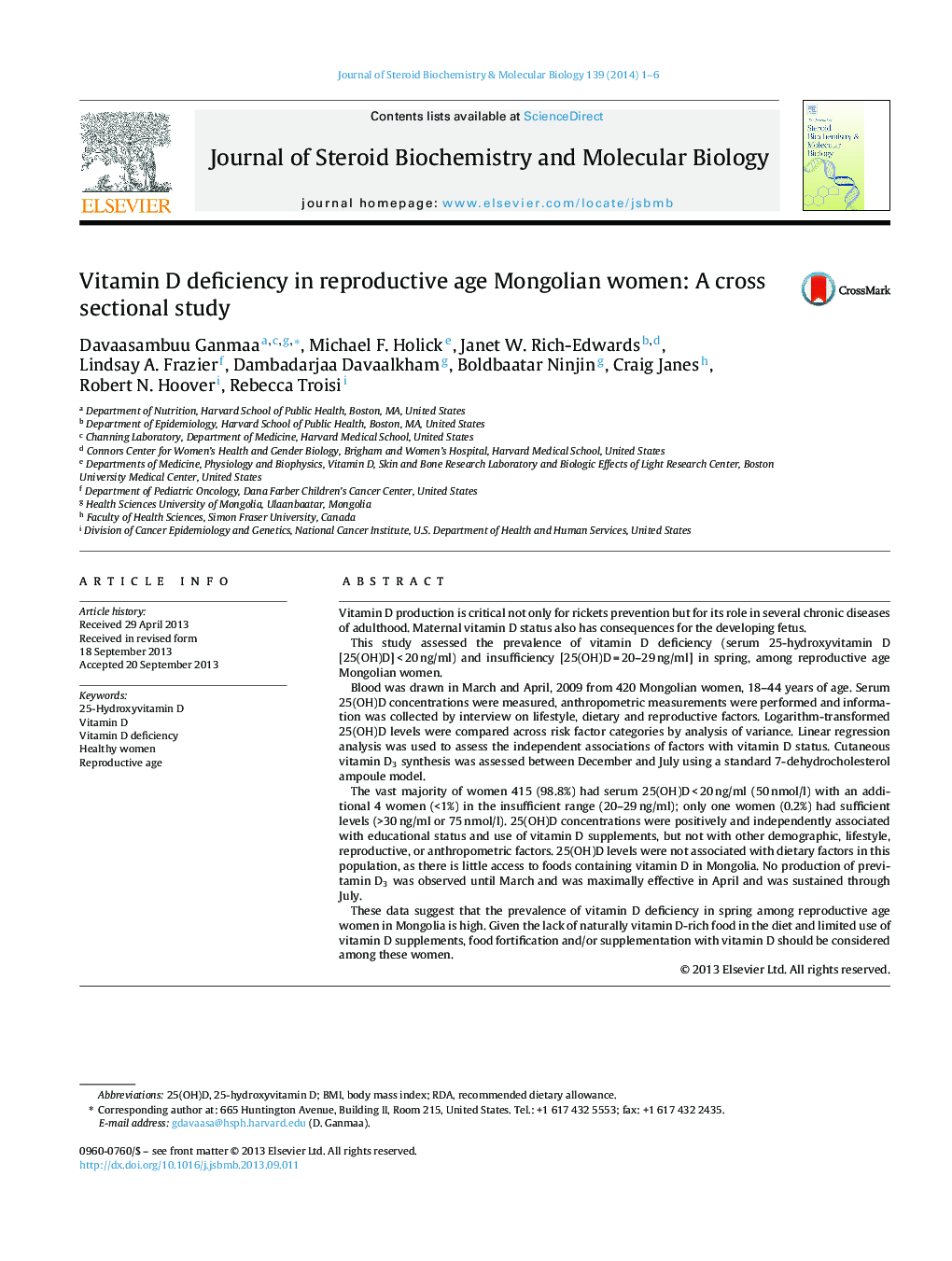| Article ID | Journal | Published Year | Pages | File Type |
|---|---|---|---|---|
| 1991534 | The Journal of Steroid Biochemistry and Molecular Biology | 2014 | 6 Pages |
•We reported vitamin D levels in two populations of healthy Mongolian women: urban born and rural born.•We documented lowest vitamin D levels in the world.•We also showed severe prevalence of vitamin D deficiency.•No vitamin D fortified and/or vitamin D rich food available in the country.•Actions to improve vitamin D levels are required in this specific population.
Vitamin D production is critical not only for rickets prevention but for its role in several chronic diseases of adulthood. Maternal vitamin D status also has consequences for the developing fetus.This study assessed the prevalence of vitamin D deficiency (serum 25-hydroxyvitamin D [25(OH)D] < 20 ng/ml) and insufficiency [25(OH)D = 20–29 ng/ml] in spring, among reproductive age Mongolian women.Blood was drawn in March and April, 2009 from 420 Mongolian women, 18–44 years of age. Serum 25(OH)D concentrations were measured, anthropometric measurements were performed and information was collected by interview on lifestyle, dietary and reproductive factors. Logarithm-transformed 25(OH)D levels were compared across risk factor categories by analysis of variance. Linear regression analysis was used to assess the independent associations of factors with vitamin D status. Cutaneous vitamin D3 synthesis was assessed between December and July using a standard 7-dehydrocholesterol ampoule model.The vast majority of women 415 (98.8%) had serum 25(OH)D < 20 ng/ml (50 nmol/l) with an additional 4 women (<1%) in the insufficient range (20–29 ng/ml); only one women (0.2%) had sufficient levels (>30 ng/ml or 75 nmol/l). 25(OH)D concentrations were positively and independently associated with educational status and use of vitamin D supplements, but not with other demographic, lifestyle, reproductive, or anthropometric factors. 25(OH)D levels were not associated with dietary factors in this population, as there is little access to foods containing vitamin D in Mongolia. No production of previtamin D3 was observed until March and was maximally effective in April and was sustained through July.These data suggest that the prevalence of vitamin D deficiency in spring among reproductive age women in Mongolia is high. Given the lack of naturally vitamin D-rich food in the diet and limited use of vitamin D supplements, food fortification and/or supplementation with vitamin D should be considered among these women.
